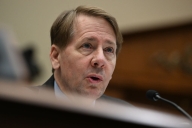You have /5 articles left.
Sign up for a free account or log in.
Trustees at the University of Virginia reportedly thought that their president – a self-described "incrementalist" two years into the job – was not making changes fast enough and that they had therefore better get rid of her. I followed the drama closely and suspect many other college presidents did as well.
In fact, several months before the events at the University of Virginia, I was invited by the Mellon Foundation to address new college presidents on a topic of my choice. I decided to reflect on articles urging trustees to demand that their presidents deliver, above all, change. Even though my institution recently had enacted a series of far-reaching new policies -- eliminating merit aid, for example, and soon afterward (despite a very uncertain economy) becoming need-blind in admission, while reaffirming our practice of meeting the full demonstrated need of every student who enrolls -- I advised my new president colleagues first to identify those things that they would not alter.
One of the articles that I mentioned, from The Chronicle of Higher Education in December 2011, reports on a study suggesting that trustees, alas, may serve on boards "for all the wrong reasons"; they are not "really interested and engaged in making change." Another, in the January-February 2012 issue of Trusteeship, asserts that routine evaluations of college and university presidents must be based not on what they have actually achieved but on what they are likely to accomplish in the future, urging board members to see whether "change is actually occurring" and whether their presidents are evincing "change-leadership traits." The principal role of boards, one gathers, ought to be to push their institutions in new directions. Different, it seems, is always better.
Such articles assert or imply that in parlous times presidents should be expected to arrive with agendas for change and pursue them vigorously. To be fair, they specify that presidents should lead the "right" kind of change, “positive” change, but the articles tend to be silent on what constitutes right or positive change. I recall a passage I saw long ago in a government navigation manual that urged quick action in emergencies, but at the same time warned against "hasty decisions that might turn out to be mistaken."
The "right" kind of change, indeed. College presidents learn quickly that there is rarely a single right answer. There are often several arguably reasonable solutions, none of them easy and none of them perfect: one has to listen hard, think hard and then take a reasoned course, based on educational and ethical values and the best understanding one can bring to the situation. As much as I appreciate trustees who challenge administrative complacency, I am not sure that their primary agenda should always be "to propose fundamental changes," to quote again the Chronicle article.
Are the best presidents really those hungriest for change at any cost? Of course the world is evolving, and just as we pride ourselves on giving our students the education and the skills they will need to adapt, we had better be ready ourselves to adapt. There are things on which we must improve – for example, using technology effectively, finding cost efficiencies, collaborating with each other and supporting our students from the time we recruit them to the time we launch them – but there are surely also things in each institution that should rather be preserved. Getting a handle on just what reforms best suit any given institution can take time.
So the wise course, it seems to me, is for presidents to begin by identifying what they do not want to change – for example, their institutions’ core values and the commitments that flow from them. At Hamilton, such values have to do, among other things, with broad access to a liberal arts education, with an emphasis on good writing and undergraduate research across the disciplines, and with the belief that active scholarship and creative activity inform good teaching. We direct our resources accordingly.
Forces that will impose change on the whole sector are certainly in play, and we need to pay attention to trends affecting pricing, energy, curriculum, assessment, technology, globalization and the like. But we also need to figure out when it makes sense for an institution to follow such trends and when to resist them, taking drastic measures only with specific objectives in view.
We ought to keep firmly in mind that, as institutions of higher learning, our horizon is not six months or six years, and that part of our mission is the application of sober critical inquiry to crises of the day. As Alexander Hamilton put it in the Federalist Papers, the role of a leader is to give "time and opportunity" for “cool and sedate reflection.”
I am reminded of an experience I had as a young teacher of French in the 1970s. A curriculum committee decided to make sure that everyone was using the latest textbooks. This made sense for electrical engineering or computer science, but for courses on the early French novel? The works I was teaching had not changed in a couple of centuries, and the anthology I had chosen, albeit a few years older and less glossy than some, was inexpensive and had a good critical apparatus. That committee seemed to me commendably aware that part of our mission was the creation of new knowledge, but it appeared to have forgotten that the other part was the preservation and transmission of things that endure.
The American higher education system has endured for centuries by adapting to change and preserving that which is most defining and essential – and being able to differentiate between the two.








